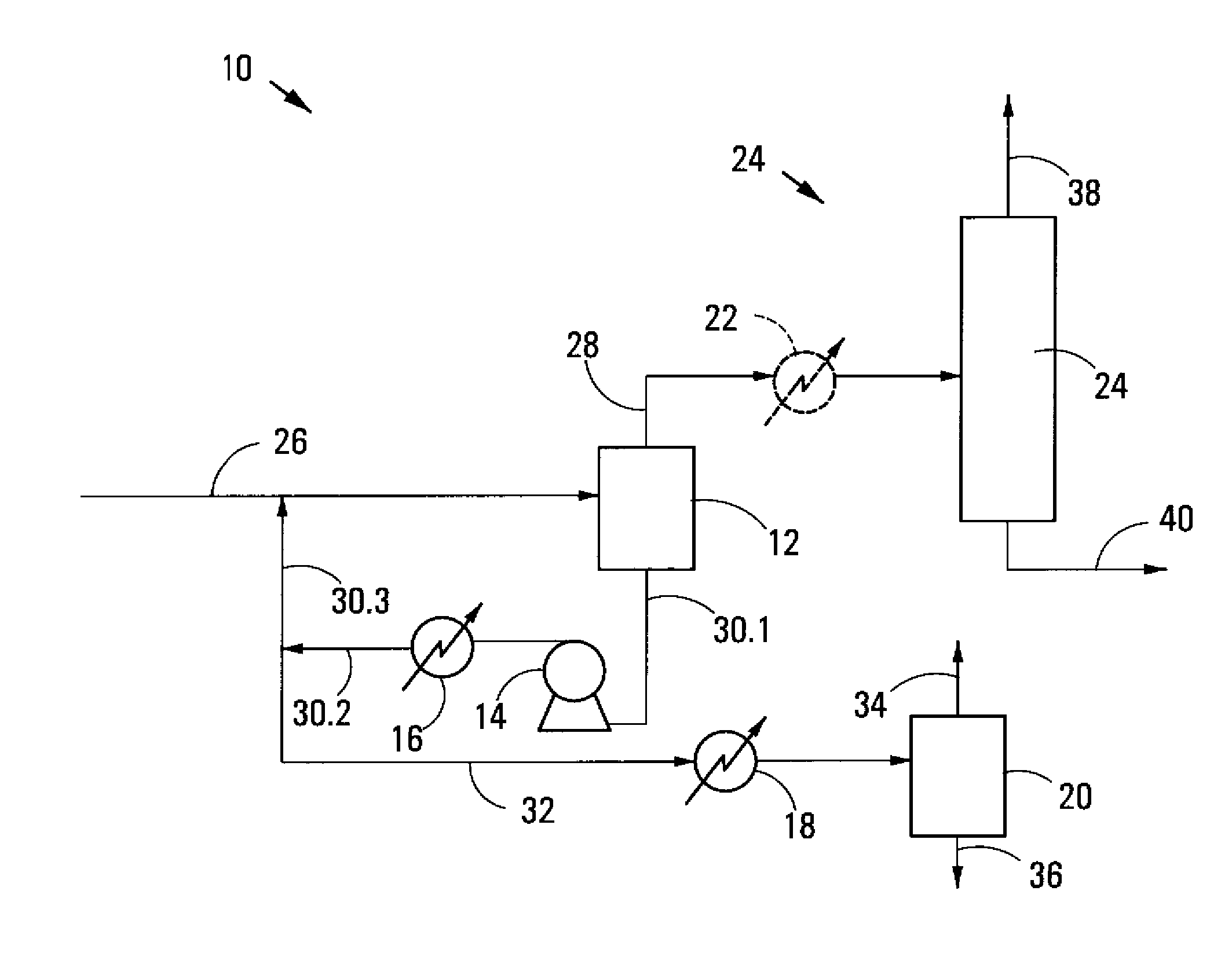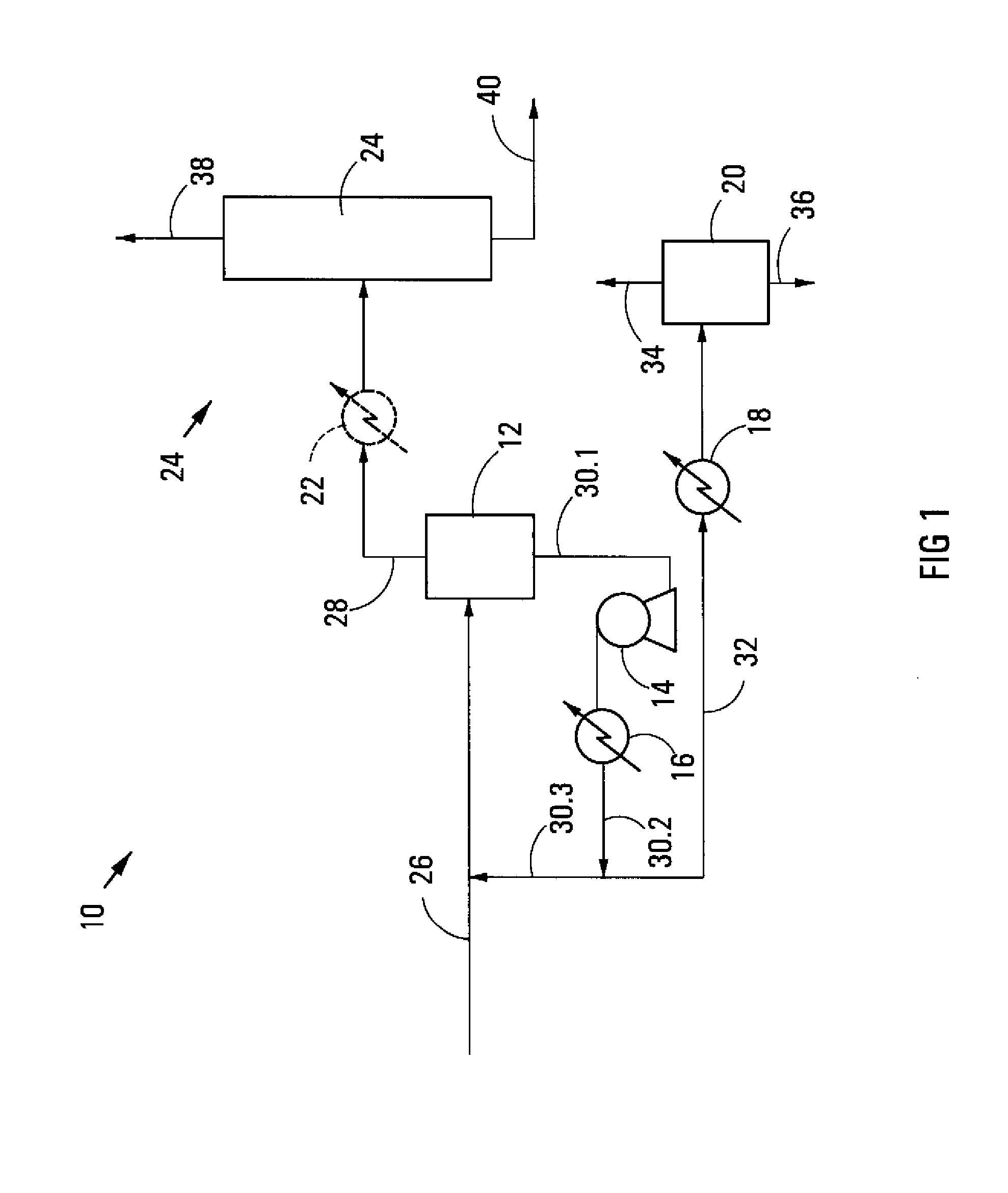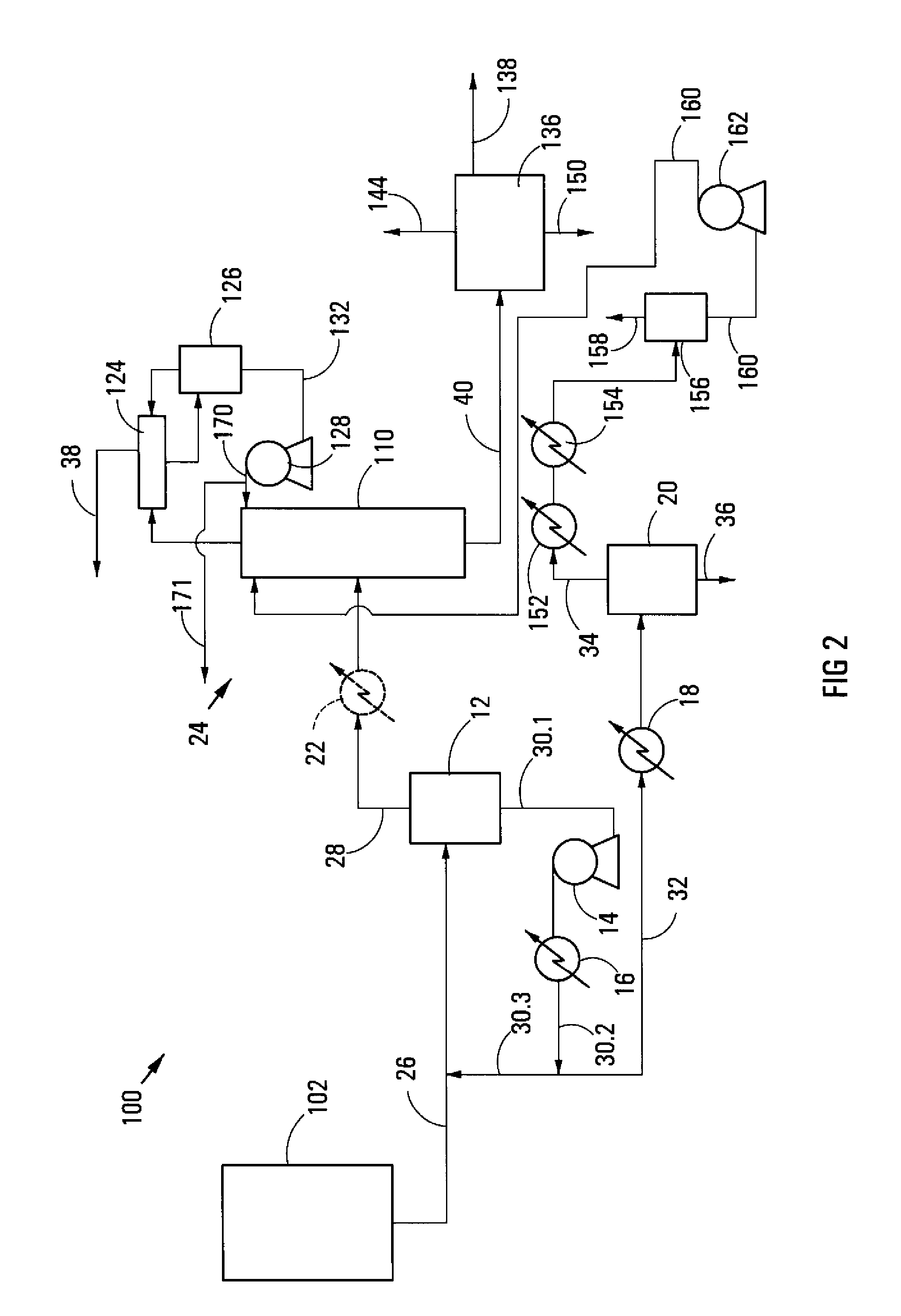Separation of components from a multi-component hydrocarbon stream
- Summary
- Abstract
- Description
- Claims
- Application Information
AI Technical Summary
Benefits of technology
Problems solved by technology
Method used
Image
Examples
example 2
[0131]In this example, the vapour in the vapour line 158 is absorbed into a slipstream of any one of the product streams represented by the product stream line 138. These product streams (e.g. a 1-hexene product stream and a 1-octene product stream and a C10+ hydrocarbon product stream) are also available at a lower pressure than the pressure of the vapour in the vapour line 158, facilitating combination with a slipstream of one or more of these product streams. In this example, the combined stream obtained by combining the vapour in the vapour line 158 with a product slipstream is routed back to the ethylene distillation recovery column 110 for recovery of the ethylene.
example 3
[0132]The vapour in the vapour line 158 in this example is absorbed into any process stream that is used for defouling of equipment, whereafter the stream is reprocessed by means of the first flash stage 12 and the second flash stage 20 and the ethylene recovery distillation column 110. For example, should either a 1-octene or a C10+ hydrocarbon stream be used for defouling the reactor 102, the vapour in the vapour line 158 may be combined with any of these streams either before the defouling step or in wash effluent from the reactor 102 after defouling.
[0133]The process 10,100 of the invention, as illustrated, has the advantage that it significantly reduces the solution viscosity of the first flash stage bottoms product and hence allows the use of lower cost equipment to pump and heat the first flash stage bottoms product. In the process 10,100 as illustrated, it is also possible to use a lower temperature, or a higher pressure, in the first flash stage 12 as less product is taken ...
PUM
| Property | Measurement | Unit |
|---|---|---|
| Temperature | aaaaa | aaaaa |
| Temperature | aaaaa | aaaaa |
| Temperature | aaaaa | aaaaa |
Abstract
Description
Claims
Application Information
 Login to View More
Login to View More - R&D
- Intellectual Property
- Life Sciences
- Materials
- Tech Scout
- Unparalleled Data Quality
- Higher Quality Content
- 60% Fewer Hallucinations
Browse by: Latest US Patents, China's latest patents, Technical Efficacy Thesaurus, Application Domain, Technology Topic, Popular Technical Reports.
© 2025 PatSnap. All rights reserved.Legal|Privacy policy|Modern Slavery Act Transparency Statement|Sitemap|About US| Contact US: help@patsnap.com



